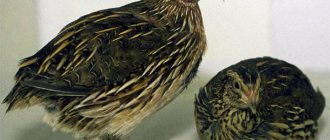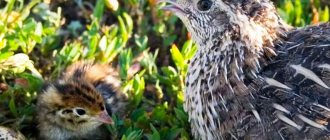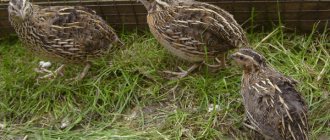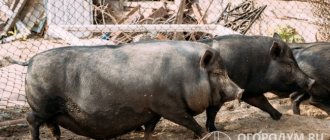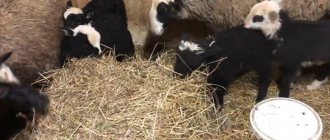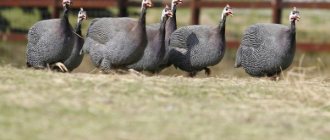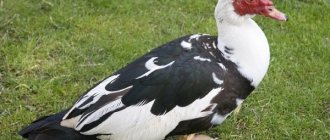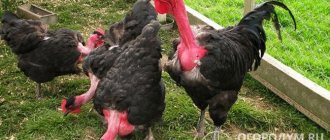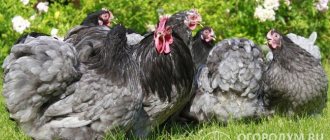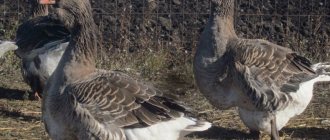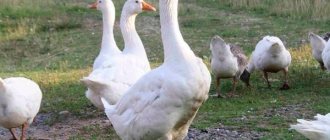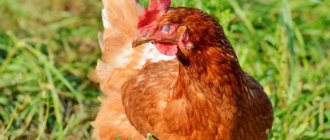Knowing at what temperature to keep quails of different ages, you can avoid losses of the bird population. This species of galliformes is distinguished by its miniature size, does not have abundant plumage and fat deposits, and therefore does not tolerate winter cold well. In order for quail to actively reproduce all year round, generating income from the sale of meat and egg products, it is important to correctly analyze at what temperature to keep them.
Keeping quails in winter
The thick plumage of quails reliably protects them from cold air. But this does not mean that winter maintenance should not be given increased attention. On the contrary, ignoring basic requirements can lead to livestock diseases or reduced egg production (Figure 1).
To make birds comfortable in winter, the following nuances should be taken into account:
- When arranging cages for summer housing, the possibility of winter housing should be provided in advance. For example, if you keep birds in a barn, it is better to use a permanent structure without cracks and drafts for this purpose.
- It is better to raise birds not in separate cages, but in cage batteries. They take up much less space, help maintain warmth and make caring for livestock much easier.
- It is recommended to leave only adult individuals for the winter, since the young animals have an insufficiently developed fur layer, which protects them from the cold.
Figure 1. Only adult individuals that can normally withstand the cold are left for the winter.
In addition, it is desirable to keep a moderately large population. This will prevent overcrowding in the cages, but the birds will still warm the interior with their warmth.
How long do they live?
Under natural conditions, the life expectancy of quails is 3-5 years, but at home this period is noticeably reduced. This is due to egg production in female quails. Starting from 40-50 days, the birds begin their productive period. Approximately before the tenth month, females begin to actively lay eggs, bringing a large number of tasty and healthy eggs. Further, the activity decreases, and at the same time the taste and beneficial qualities of this product deteriorate.
Experienced sparrowhawks leave no more than 10-15% of the birds of the entire population for wintering. Young birds tolerate cold well due to their dense and dense down, and do not require special care, while older quails require artificial means of heating.
Requirements for premises for keeping quails in winter
Proper room arrangement plays a key role in successful winter growing. For example, if you keep a small flock from several families, cages with birds can be placed in the corner of any heated room (Figure 2).
Note: City residents can even place cages on a balcony or loggia, but it should be taken into account that to prevent drafts and hypothermia, the structure must be glazed and insulated.
Figure 2. Arrangement of cages and premises for housing livestock
If the farm raises a large number of livestock, the arrangement of the premises will have to be approached more carefully. The ideal option would be to place cages or cell batteries in a permanent barn with good ventilation and heating capabilities. However, experienced poultry keepers keep birds not only in barns, but even in unused greenhouses, so in the following sections we will go into more detail about the different types of poultry housing.
Lighting
Without sufficient light, quails will not lay eggs. It is optimal if the room has windows and natural light penetrates into it. Additionally, to increase daylight hours, you will need to install lamps. In a barn without heating, preference should be given to infrared, and with heating - LED or daylight. To maintain the egg production rate, daylight hours of 15-17 hours are required.
Keeping quails in a barn in winter
A barn is the simplest and most cost-effective option for keeping it in winter. In such a room you can freely place cell batteries, as well as install devices for heating, ventilation, lighting and maintaining humidity (Figure 3).
Note: Sunlight plays an important role in the development of individuals, as it is a valuable source of vitamin D. If birds are deficient in this vitamin, they may develop rickets. Accordingly, a winter shed must have windows and a high-quality ventilation system.
Other requirements for arranging a barn for keeping quails in winter include:
- The temperature inside the room should be comfortable for the birds. Otherwise, their egg production and meat productivity will decrease.
- Optimal humidity and high-quality ventilation also directly affect productivity. Without a constant supply of fresh air, birds may begin to get sick.
- The area of the premises must correspond to the number of livestock, since crowded housing impairs the quality of meat and reduces the number of eggs. Fortunately, these are small birds and do not require much space to keep them. So, in just 30 square meters of area you can quite freely accommodate up to a thousand individuals.
When arranging a shed, it should be taken into account that cellular batteries should be freely placed inside, and there should be enough space between them for passage. Experienced poultry farmers recommend making batteries with a maximum of five tiers to make it convenient to care for the livestock. Additional equipment you will need is a container for storing food, a brooder for young animals and an incubator for hatching chicks, but experts recommend not breeding chicks in the winter.
Figure 3. Poultry barn
Separately, you should dwell on the arrangement of the barn itself. The walls must be covered with plaster and whitened with slaked lime. This will help to quickly disinfect the room in the future. A cement screed is made on the floor, and the windows are sealed with any matte material to create moderate shade inside the room. It is also necessary to take care of connecting heating equipment and artificial lighting. If you live in a region with frequent power outages, you will additionally need a generator, since a sudden power outage can cause not only a decrease in productivity, but even the death of livestock.
Useful tips for beginners
In conclusion, advice for those who are just starting to breed these birds:
- Decide why you will do this. The number of individuals depends on this. If you want to have eggs and meat just for yourself, then 20 pieces are enough. If you contain more, there will be surplus products that will need to be sold. With a large flock, material and physical costs increase, so calculate your strength correctly.
- Consider where you will keep them. The location must be selected depending on the number of individuals, and you must also decide how you will comply with the requirements for temperature, humidity and amount of light.
- Solve the issue with the cells. You can make them yourself or buy ready-made ones.
- Make a financial calculation in advance. Calculate how much money you will need at the initial stage, then to purchase food and maintain normal conditions, and you will understand whether it will be profitable to engage in this business.
- Please note that quails need daily care. The need for feeding, cleaning, and assembling eggs requires a lot of time. Therefore, if large scales are planned, you need a person who will do this.
Did you know? Quail eggs do not cause allergies. They contain the protein ovomucoid, which suppresses allergic manifestations. A similar protein is used in the manufacture of antihistamines.
Winter breeding of quails is not such a difficult job. Of course, some poultry farmers don’t bother and raise these birds only in the warm season, and then put them under the knife. But taking into account the fact that you now know how quail calmly endure the winter if certain conditions are created for them, you can do this exciting activity all year round. So, think, weigh the pros and cons. And we wish you success in this field!
Quail in a greenhouse in winter
If you have a greenhouse on your property that is not used in the winter, it can be adapted for keeping quails. In cold weather, such a design will be quite warm, and the flow of fresh air can be ensured by periodically opening the vents (Figure 4).
Picture 4. Greenhouse - a convenient and cheap way of winter accommodation
It should be borne in mind that quails, unlike other poultry, cannot be kept free-range in a greenhouse. The fact is that they are very timid by nature, and the slightest noise or frequent presence of a person can cause them severe stress. To avoid a decrease in egg production and meat productivity, it is better to install cages or cage batteries in the greenhouse. Birds will feel more comfortable and protected in them.
Breeding
In addition to special conditions of detention, you should know the basic rules for breeding quails in winter.
Laying hens have poorly developed maternal instinct, so without an incubator it will not be possible to hatch chicks.
Before loading into the incubator, the eggs are kept for 7 days in a dark room at a temperature of 9˚C to 15˚C and air humidity of about 80%.
Eggs should be placed in the incubator without chips or scratches, with the blunt end facing up. Then they need to be disinfected using an ultraviolet lamp. To do this, just hold the eggs for five minutes under ultraviolet rays at a distance of up to 40 cm from the lamp. Chicks in the incubator begin to appear on the 17th day. After they hatch, they are kept inside for another 5 hours and only then are they moved to specially designated cages.
Chicks older than three days need to be equipped with a small cage with sawdust bedding. Only after 10 days can the chicks be transferred to a poultry house with a fine mesh floor. The height of the structure must be at least half a meter. In good conditions, after a few months, healthy quails grow and begin to lay eggs.
Regardless of the time of year, breeding quail in winter or summer always pays off quickly, since this type of poultry has a high reproductive system.
The larger the area for raising birds, the more profitable the breeding will be.
Quail on the balcony in winter
The obvious advantage of quails is their small size. Thanks to this, several dozen birds can be kept even on a glassed-in balcony or loggia of a city apartment (Figure 5).
Note: If you are just starting to try your hand at breeding birds, it is better to start not with chicks, but immediately with adults. On average, the female begins to lay eggs at two and a half months, and this period lasts up to one year.
If you clearly decide to raise quails on your balcony, you need to properly prepare the room:
- A balcony or loggia must be glazed and insulated so that birds do not freeze in the cold season.
- The room must have good ventilation, since fresh air plays an important role in the productivity of the livestock.
- You can calculate the size of the cells based on the number of livestock. On average, 1 bird requires about 200 square centimeters of space.
Figure 5. City residents can easily raise birds on the balcony.
In addition, you need to make sure that the balcony maintains a stable temperature of about +20+22 degrees with a humidity of 60-70%. You should also take into account that you will have to clean the cages of droppings more often so that the unpleasant odor does not bother your neighbors.
Varieties
Meat and egg breeds are aimed at obtaining a product, and decorative ones for beauty.
There are much fewer quail breeds than, for example, chicken breeds, so when organizing your quail farm it is easier to make a choice in favor of any breed. There are several varieties of quail breeds:
- meat;
- egg;
- meat and eggs;
- decorative
Meat, egg and meat-egg breeds are focused on obtaining a specific product, and decorative breeds are bred for beauty and participation in exhibitions.
Meat
For increase
quail meat productivity
crossed with other species
The average weight of an individual reaches 300g
The Pharaoh breed was developed in the USA and later became widespread in European countries. The average weight of adult individuals reaches 270-300 grams, but individual specimens can weigh up to 0.5 kg. White Texas quail have a dense build. Females weigh up to 450 grams, males are somewhat smaller. With good care and proper nutrition, birds can reach a weight of 5.5 kg. The meat yield is up to 75% of the total weight of the bird.
We invite you to familiarize yourself with Red fish in the oven
Feeding quails in winter
Proper nutrition is one of the key aspects of successful cultivation, not only in winter, but also at any other time of the year. In most cases, farmers prefer to buy ready-made food for quail, but in the cold season, birds require a more nutritious diet, so they are often given sprouted grain (Figure 6).
Note: To get nutritious food from sprouted grains, you just need to soak it in water and leave it in a warm room. Within a few days, the grains will begin to germinate and can be given to the birds. However, it is necessary to ensure that the grains remain moist at all times.
In general, quail are considered low-maintenance feeders and consume very little food, although their egg and meat production is maintained. However, if you really care about the health of your birds, you will have to stock up on additional fortified feed. For example, even in a city apartment in winter you can grow green onions and lettuce in small pots. This greenery can later be given to birds as a valuable vitamin supplement. If you don't have the opportunity to grow fresh greens, you can replace them with raw vegetables - turnips, carrots, beets or cabbage. Boiled potatoes will also be a good addition to your diet.
Figure 6. Special feed and sprouted grains are the basis of the winter diet
In winter, quails will also need roughage, in particular hay, so over the summer it is advisable to dry a sufficient amount of nettle, sorrel or legumes. But experienced poultry farmers recommend giving preference to clover, which quail eat well both fresh and dried.
Selecting a location
According to reviews from most domestic quail breeders, when choosing a place to keep quails in an apartment, you should be guided by the following:
Ideally - on a glassed-in balcony. In cold weather you will need heating. Out of bright sunlight and drafts. Where the birds will not be constantly disturbed by people and sharp sounds
They do not respond to the sound of a working radio or TV. It is important that the cage can be approached and cleaned in and around it. During the feeding process, the bird scatters feed, and droppings also fly in all directions.
It's not a good idea to put a cage of quails in the bedroom of your apartment. Up to 1.5-2 months they will disturb with the sound of steps on the net (from the first rays of the sun), and then the males begin to vocalize around the clock and without stopping. The only solution to the problem is to keep same-sex individuals within visibility (i.e., so that the cockerels do not see the hens).
A good option, if you don’t have a loggia, is to place the birds in a non-residential room, or to allocate a secluded corner in the kitchen.
In such a simple design made from scrap materials, you can successfully keep up to 5-7 quails of the Japanese breed in the kitchen of your apartment.
Placement of quail cages
Comfortable temperature for quails is 18-20 degrees. A place without drafts and with a stable temperature is allocated for the cells. Please note that when small birds get cold, they climb on top of each other, and this is a likely cause of crushing and suffocation of a weakened bird.
It is important that the surface of the cages is not accessible to chickens, otherwise the quail will become contaminated with chicken droppings. As for the design features of a quail cage, its area is determined by the number of birds
The recommended planting density is one individual per 100 cm2. The height, width and length of the structure are 0.25, 0.45 and 1 m, respectively. The cages are arranged in tiers and the entire height of the room
As for the design features of a quail cage, its area is determined by the number of birds. The recommended planting density is one individual per 100 cm2. The height, width and length of the structure are 0.25, 0.45 and 1 m, respectively. The cages are arranged in tiers and span the entire height of the room.
Hygiene procedures
At least twice a year in spring and autumn it is necessary to do a general cleaning of the poultry house. For this:
- birds are removed from cages without mixing with other breeds of birds
- The cells must be washed with soap and water, and then doused with boiling water.
- You can speed up the drying process using a hair dryer
- place birds only in dry cages, because dampness will have a bad effect on the health of quails
In order not to introduce infection into the poultry house, it is necessary to build a disinfection barrier, which is a box with sides up to 5 cm, filled with sawdust, and covered with burlap on top. Soak everything well with disinfectant solution. When entering the premises, the poultry farmer wipes his shoes and does not introduce microorganisms into the house.
